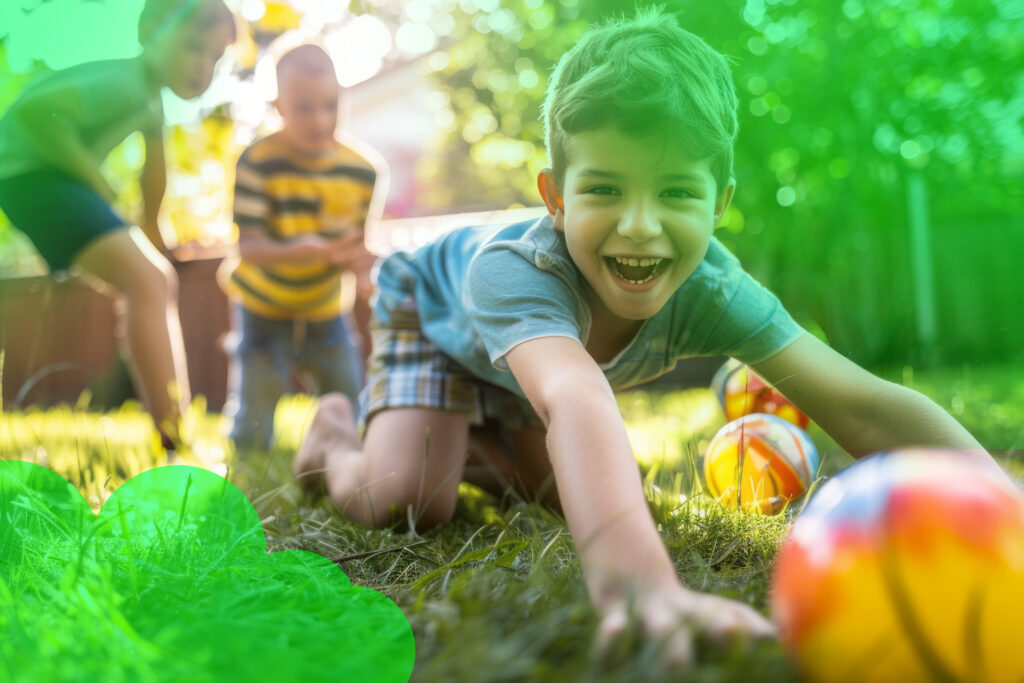Choosing the right surface for a playground is a matter that affects not only the comfort of children but, above all, their safety. A poorly chosen surface can lead to injuries and, in extreme cases, even serious injuries.
A number of solutions are available to help, each with its own advantages and disadvantages. Find out more about them.
What to put under the playground? Sand and gravel - the cheap classics
Sand is the cheapest and most popular option. It is soft, easily accessible and easy to maintain. It works great in sandpits and cushions falls. Unfortunately, sand can get dirty and dusty and is a hazard for young children who may swallow it. It also requires regular cleaning and refilling.
What kind of surface for a backyard playground? Soft grass
Grass is a natural and aesthetically pleasing choice that makes a playground in the garden becomes a little safer. Unfortunately, grass can only cushion accidents from low heights, so it is not the best choice when our playground abounds with tall structures. It will be suitable for toys such as a swing, low slide or rockers. It is easy to maintain, requiring only regular mowing and watering. Be aware, however, that it can be slippery after rain, and weeds and other plants can grow on it.
Safe garden playground - rubber flooring
When choosing a surface for your garden playground, synthetic solutions are worth considering. Unlike loose surfaces such as sand or gravel, synthetic slabs and mats do not require regular topping up and maintenance. They are also very durable, making them an ideal choice even for intensive use by children.
The advantages of synthetic playground surfaces are first and foremost excellent cushioning. Synthetic slabs and mats provide a high level of cushioning for falls, even from great heights, which protects children from injury. Resistance to weather conditions is another advantage. They do not degrade when exposed to rain, snow or sunlight. In addition, they are easy to maintain, simply sweeping or washing with hose water on a regular basis to keep the surface clean.
Types of synthetic playground surfaces
SBR polyurethane panels
Stacked like a jigsaw puzzle, SBR slabs provide high cushioning and are slip-resistant. They do not form puddles after rain and are very durable.
SBR polyurethane surfacing
The poured polyurethane surface can take any shape and provides excellent cushioning, durability and ease of maintenance.
Wood - natural charm and safety
Wood is a natural and aesthetically pleasing material that provides a safe play area for children. The surface cushions falls to a lesser degree than rubber flooring or sand, but will certainly be a better choice than paving slabs. Wooden playground substrates include wood chips and wood bark. These are natural and aesthetically pleasing materials that are soft and cushion falls. They can get dirty and rot and provide a habitat for insects. Therefore, it requires regular replenishment.
You can also choose planks. Unfortunately, wood can be expensive and requires regular maintenance - painting or varnishing. It can also slip after rain and is not as durable as paving slabs or rubber flooring.
Type of playground surface - comparison
Here is a comparison of the pros and cons of paving in a nutshell. Choose the option that works best for you and put your playground on the perfect surface.
| Surface | Advantages | Disadvantages |
| Sand | Low price, easy to access, easy to maintain, soft, fun to play with | Dirt, dust, risk of swallowing, low shock absorption |
| Grass | Natural look, feel, safety | Slippery, tedious maintenance, weed growth, low cushioning |
| Rubber linings | High safety, ease of maintenance, durability, aesthetics, accessibility | High cost, heating up in the sun, potential for odour |
| Paving slabs | Durability, weather resistance, ease of maintenance, aesthetics, low price | Hardness, low cushioning, high risk of injury |
| Wood | Natural charm, safety, tactile pleasure, cushioning | High cost, regular maintenance, slippery after rain, low durability |


